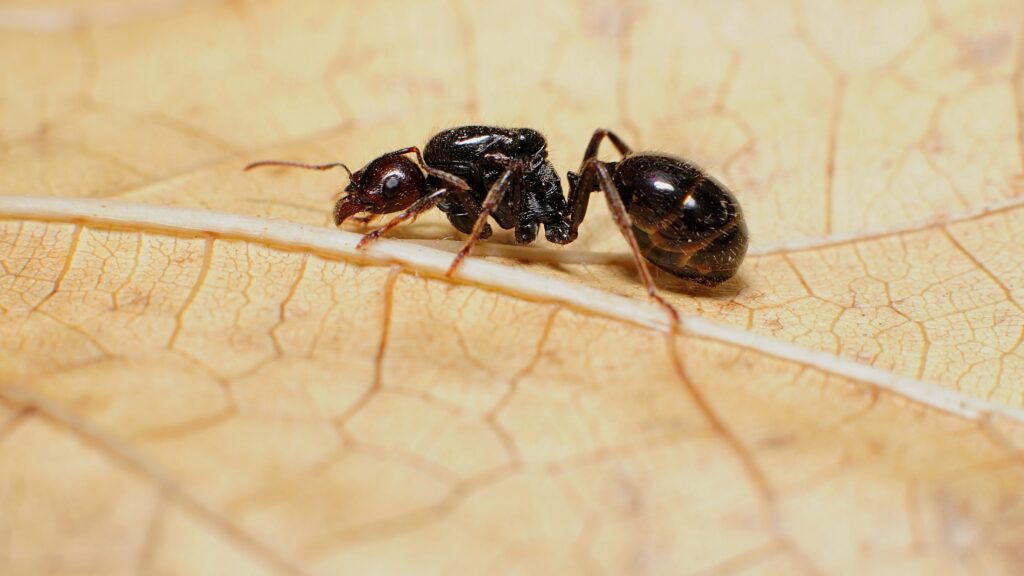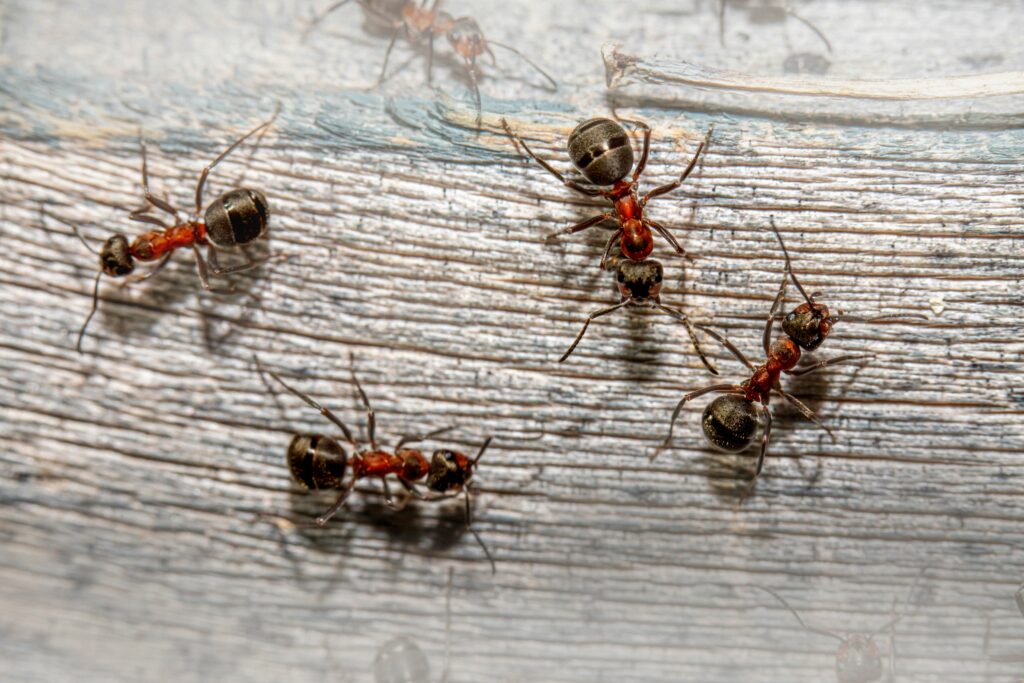Beneath our feet, a silent invasion has been reshaping America’s ecological landscape for over a century. The Argentine ant (Linepithema humile), a seemingly unremarkable brown ant measuring just 2-3 millimeters long, has established what scientists now recognize as one of the largest supercolonies on Earth. Unlike most ant species whose colonies fight fiercely over territory, Argentine ants from California to the Carolinas behave as if they’re all part of one massive family, cooperating across thousands of miles. This unprecedented biological phenomenon represents one of the most successful invasions in recorded history and poses significant questions about the future of native ecosystems across the United States. The story of how these tiny insects conquered American soil offers a fascinating glimpse into evolution, adaptation, and the unintended consequences of global commerce.
Origins of the Argentine Ant

The Argentine ant’s story begins along the Paraná River basin in South America, specifically in regions of Argentina, Brazil, Paraguay, and Uruguay. In their native range, these ants exist in relatively small colonies with distinct boundaries and engage in territorial battles with neighboring colonies. The harsh South American climate and presence of natural predators kept their populations naturally balanced for millennia. Scientists believe the first Argentine ants arrived in the United States around the 1890s, likely hitchhiking aboard coffee ships docking in New Orleans. The timing coincided with increasing global trade at the turn of the century, when inspection protocols were minimal and the concept of invasive species wasn’t yet understood. What seemed like an insignificant arrival would eventually transform into one of the most consequential biological invasions in North American history.
The Formation of the Supercolony

What makes Argentine ants truly remarkable is their ability to form supercolonies—massive networks of interconnected nests that can span hundreds or even thousands of miles. This phenomenon occurs because the ants that were introduced to the United States came from a limited genetic pool, essentially making them all extended family. When Argentine ants from different nests encounter each other, they don’t display the typical aggression seen in most ant species but instead recognize each other as nestmates due to similar chemical signatures on their exoskeletons. Research has shown that ants taken from San Diego can be placed with ants from San Francisco—locations separated by over 500 miles—and they’ll immediately begin cooperating as if they’ve always been part of the same colony. This unity gives them an enormous competitive advantage, as they don’t waste resources fighting among themselves and can direct all their energy toward expansion and resource acquisition.
The California Invasion

California has become ground zero for the Argentine ant supercolony, with estimates suggesting they’ve claimed territory along much of the state’s coast and inland valleys. In urban and suburban areas of Southern California, Argentine ants may account for up to 90% of all ants found, completely displacing native species that once thrived there. The mild Mediterranean climate of California provides ideal conditions for these ants, which thrive in moderately warm, humid environments but struggle in extreme heat or cold. Their expansion has been particularly visible in agricultural regions, where they’ve developed mutualistic relationships with sap-feeding insects like aphids and scale insects, which they “farm” for honeydew. The California supercolony is so vast that some scientists believe it represents the largest cooperative animal group ever recorded, with billions of workers and millions of queens operating in perfect harmony across the state.
Transcontinental Spread

While California hosts the most studied population, the Argentine ant has established significant colonies across the southern United States, creating what some researchers refer to as a “transcontinental supercolony.” From California, they’ve spread eastward through Arizona, Texas, Louisiana, and throughout much of the Southeast, including Florida, Georgia, and the Carolinas. The expansion follows a predictable pattern along the mild climate zones that mirror their native South American habitat. Human transportation networks have accelerated their spread, with colonies hitchhiking in potted plants, landscaping materials, and shipping containers. In Hawaii, Argentine ants have even been documented climbing to elevations of over 4,000 feet on Maui and the Big Island, demonstrating their adaptability to different environments. The continental expansion shows no signs of slowing, with new populations being discovered regularly at the edges of their known range.
Unique Biology and Behavior

Several biological adaptations make Argentine ants particularly successful invaders. Unlike many ant species that have a single queen per colony, Argentine ant nests contain multiple queens, sometimes dozens or even hundreds, allowing for explosive population growth and resilience. Their colonies are also highly mobile, with workers quickly relocating queens and brood when conditions become unfavorable, giving them an edge during environmental disturbances. Perhaps most importantly, Argentine ants have developed a remarkable social structure where workers move freely between nests, sharing resources and information across vast distances. This level of cooperation extends to their foraging behavior, where they create “highways” of ants that can stretch hundreds of feet from nest to food source, allowing them to exploit resources more efficiently than most native species. Their diet is extraordinarily flexible, ranging from nectar and honeydew to seeds, small insects, and even household foods, making them adaptable to almost any environment they encounter.
Ecological Impact on Native Ants

The arrival of Argentine ants has been nothing short of catastrophic for native ant species, many of which have completely disappeared from invaded areas. Studies in California have documented up to 90% reduction in native ant diversity following Argentine ant establishment, with some endemic species now threatened with extinction. The mechanism of displacement involves both direct and indirect competition, as Argentine ants physically attack native ant colonies while also exhausting available food resources through their superior numbers and foraging efficiency. Native harvester ants, carpenter ants, and fire ants—once common across the American South and West—have retreated to areas not yet reached by the invaders. The loss of these native species creates ripple effects throughout ecosystems, as many native ants play crucial roles in seed dispersal, soil aeration, and nutrient cycling that Argentine ants don’t replicate. In some California coastal sage scrub habitats, scientists have documented not just the loss of native ants but cascading effects on plants that depend on them for seed dispersal.
Broader Ecosystem Disruption

The impact of Argentine ants extends far beyond just displacing other ant species, affecting entire ecosystems in complex ways. One of the most concerning relationships is their tendency to protect and “farm” sap-sucking insects like aphids, scales, and mealybugs, which damage crops and ornamental plants by extracting plant fluids and spreading disease. In exchange for protecting these pests from predators, Argentine ants collect the sweet honeydew these insects produce. This relationship has been particularly problematic in agricultural settings, where Argentine ant invasions often correlate with increased crop damage. Additionally, many reptiles, birds, and mammals that previously fed on native ants have lost this food source, forcing them to alter their diets or decline in population. Coast horned lizards in California, which specialize in eating harvester ants, have experienced significant population declines in areas dominated by inedible Argentine ants. Even soil chemistry and decomposition rates have been altered in heavily invaded areas, demonstrating how a single species can transform entire ecosystem functions.
Urban Invasion and Human Impact

For many Americans, the Argentine ant invasion manifests most visibly as a persistent household pest problem unlike any experienced with native ants. These tiny invaders enter homes in long trails, seeking moisture and food, particularly sweets and proteins, and proving remarkably difficult to eliminate. Unlike native ants that typically have outdoor nests and make occasional forays into homes, Argentine ants often establish satellite colonies inside walls, under appliances, or in potted plants, making them year-round inhabitants. Their economic impact is substantial, with Americans spending hundreds of millions annually on pest control specifically targeting these ants. Beyond being a nuisance, Argentine ants can damage electrical equipment by nesting in outlets and junction boxes, and in healthcare settings, they’ve been documented transporting pathogenic bacteria. Their presence in urban environments also correlates with reduced populations of beneficial insects like pollinators and predatory insects that would otherwise help control garden pests.
Genetic Factors Behind the Invasion

The genetic story behind the Argentine ant invasion offers fascinating insights into how invasive species can transform when introduced to new environments. Research has revealed that the Argentine ants in the United States show remarkably low genetic diversity compared to their relatives in South America, suggesting they experienced a severe population bottleneck during introduction. This limited genetic diversity would typically be disadvantageous, but in this case, it created an unexpected benefit by reducing recognition cues that would normally trigger aggression between colonies. Scientists have identified specific changes in genes related to chemical recognition and territorial behavior that differ between native and invasive populations. These genetic changes essentially “rewired” the ants’ social behavior, allowing the formation of supercolonies that would be impossible in their native range. Evolutionary biologists consider this a remarkable example of how quickly invasive species can adapt to new environments, sometimes developing entirely new behavioral traits within just decades of introduction.
Climate Change and Future Spread

Climate change projections suggest a complex future for the Argentine ant supercolony in the United States. While warming temperatures may initially allow these ants to expand their range northward into previously inhospitable regions, extreme heat and drought conditions could eventually limit their distribution in the southern portions of their current range. Computer modeling studies predict potential expansion into the Pacific Northwest, parts of the Mid-Atlantic, and higher elevations in the Appalachian Mountains as these areas become milder. However, increasing frequency of extreme weather events may simultaneously create barriers to continuous expansion. Particularly concerning to ecologists is the potential for Argentine ants to reach previously isolated ecosystems with high endemic biodiversity, such as mountain “sky islands” in the Southwest that have thus far remained uninvaded. Climate researchers and entomologists are collaboratively monitoring these patterns, as the Argentine ant serves as an important indicator species for understanding how invasive organisms respond to changing climate conditions.
Control Strategies and Challenges

Controlling the Argentine ant supercolony presents unique challenges unlike those posed by other invasive species. Traditional insecticide applications often prove ineffective against these ants because of their massive colony size and rapid reproductive rate—even if 99% of a local population is eliminated, the remaining 1% can quickly repopulate the area. The most effective approaches have involved baiting systems that worker ants carry back to nests, gradually affecting queens and larvae, though these must be carefully formulated to work slowly enough that ants distribute them widely before dying. Biological control options remain limited, as introducing predators from the ants’ native range carries its own ecological risks. Some promising research focuses on pheromone disruption techniques that interfere with the chemical communication systems Argentine ants use to coordinate activities. The most successful management programs have employed integrated pest management strategies combining multiple approaches, particularly in sensitive ecological areas where complete eradication may be impossible but population reduction can allow native species to recover.
Ecological Restoration Efforts

In areas heavily impacted by Argentine ants, ecological restoration efforts have shown promising results when combining ant population control with active restoration of native species. Several conservation areas in California have implemented projects where Argentine ant populations are suppressed through targeted baiting programs while simultaneously reintroducing native ant species and the plants that depend on them. These projects require long-term commitment, as restoration often proceeds neighborhood by neighborhood, gradually reclaiming territory for native species. Encouragingly, research has shown that native ant communities can recover relatively quickly once Argentine ant populations are reduced below certain thresholds. The Channel Islands off California’s coast have become important testing grounds for these approaches, with some islands showing significant recovery of native ant diversity following concentrated management efforts. These restoration projects not only address the ant invasion directly but also work to repair the broader ecological relationships that have been disrupted, including seed dispersal networks and pollinator interactions essential to ecosystem health.
Lessons from the Invasion

The Argentine ant supercolony offers profound lessons about biological invasions that extend far beyond entomology. This case demonstrates how seemingly minor introductions can transform into continent-scale invasions when species possess the right combination of traits—in this case, dietary flexibility, rapid reproduction, and social cooperation. The invasion highlights the importance of early detection and rapid response systems for potentially invasive species, as control becomes exponentially more difficult once supercolonies establish. Perhaps most importantly, the Argentine ant story illustrates how human commerce and habitat modification create opportunities for invasive species—these ants thrive particularly well in human-altered environments with regular irrigation and disturbed soils. The supercolony represents a living laboratory for studying evolutionary processes in real-time, as we witness the development of new social structures and behaviors that didn’t exist in the species’ native range. As climate change and global trade accelerate, understanding these dynamics becomes increasingly crucial for predicting and managing future biological invasions that could similarly transform ecosystems.
The Argentine ant supercolony spanning American soil represents one of the most remarkable biological phenomena of our time—a tiny insect rebuilding entire ecosystems in its image across thousands of miles. While the full ecological consequences continue to unfold, this invasion has forever altered the biodiversity of affected regions and demonstrates the profound interconnectedness of our global ecosystems. As researchers develop better tools to understand and potentially manage these ants, the supercolony serves as both a cautionary tale about unintended consequences and a testament to the extraordinary adaptability of life. The invisible empire beneath our feet reminds us that sometimes the most consequential changes to our world come from its smallest inhabitants, working together in numbers too vast to comprehend.

